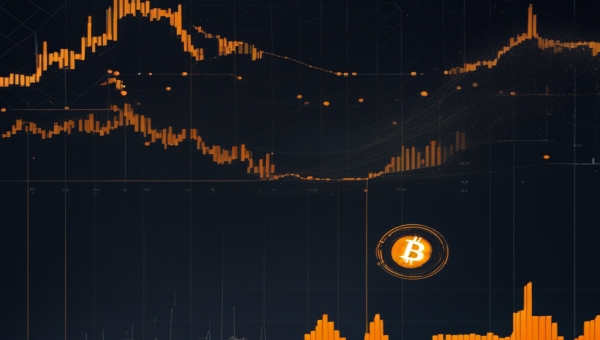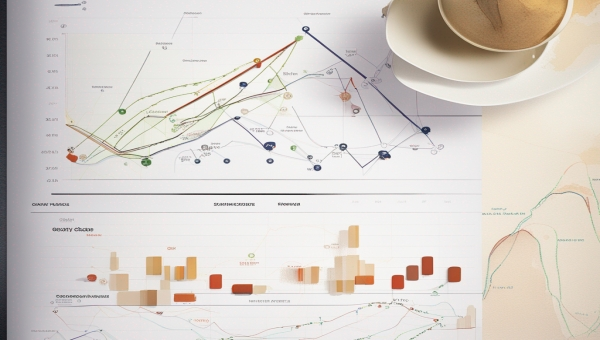Price Action
Price Action
Understanding 'Price Action' in Option Trading with Cryptocurrencies
In the energetic world of Option trading with cryptocurrencies, understanding the term 'Price Action' can make a significant difference. Let's deep dive into the concept of Price Action, its relevance, and why it matters for investors and traders.
Wo fängt 'Price Action' an?
Price Action is a trading method used to make quality decisions based on the price movements of cryptocurrencies. It does not consider the fundamental factors of assets. Instead, it aims to identify patterns within price charts to predict future price movements more effectively.
Wie funktioniert 'Price Action'?
Price Action is all about analysing a cryptocurrency's historical prices. When traders use Price Action, they study price movements over time. They look at peaks and valleys, trends, and the speed of price changes. Using this data, they can chart potential future movements and make strategic trading decisions.
Warum ist 'Price Action' wichtig im Bereich der Options-Trading mit Cryptocurrencies?
With the increasing popularity of Option trading with cryptocurrencies, understanding Price Action is becoming more critical. Traders can use it to capitalize on market volatility, catching opportunities to buy low and sell high. Armed with the insights from Price Action, traders are better equipped to manage risks and optimise returns on their cryptocurrency Option trades.
Umsetzung von 'Price Action' bei Option Trading with Cryptocurrencies
In practical terms, traders use Price Action to inform their decisions in the volatile cryptocurrency market. They look for certain chart patterns, like resistance levels, support levels, and price channels. They use these patterns to predict where the price might head next. For instance, if the price of a cryptocurrency breaks through a resistance level, it might be a signal to buy. Conversely, if it breaks a support level, it might be time to sell.
The Bottom Line: The Power of 'Price Action'
Gaining mastery of Price Action can transform a trader’s success in the unpredictable world of cryptocurrency options trading. It provides an innovative approach to predict and react to the market's possible future changes. Even though the cryptomarket is inherently volatile, understanding Price Action can equip traders with the crucial knowledge and tools they need to make informed trading decisions.
Blog Posts with the term: Price Action

In this article, the author explores the importance of understanding Bitcoin chart patterns in order to predict future price movements and make informed trading decisions. They discuss common chart patterns such as the Head and Shoulders, Double Top and Double...

Deribit is a leading platform for Bitcoin options trading, offering deep liquidity, advanced analytics, and robust tools like the Option Wizard to cater to both novice and expert traders. Its focus on security, innovation, and user-friendly features makes it a...

Bybit’s crypto options platform offers a user-friendly, feature-rich environment for both beginners and pros to trade European-style contracts with robust liquidity. Setting up an account is straightforward, and the intuitive interface makes navigating option chains, placing trades, and managing risk...

This article introduces chart analysis techniques for cryptocurrency trading. It covers the basics of reading candlestick charts, the pros and cons of different analysis techniques, and the importance of recognizing chart patterns and understanding moving averages. The article aims to...

The Bitcoin Options Put Call Ratio is a tool used to gauge market sentiment by comparing the volume of put options (bearish bets) to call options (bullish bets), with values greater than one indicating bearishness and less than one suggesting...

Analyzing open interest by strike price in BTC options helps traders identify key support and resistance levels, anticipate volatility, and gauge market sentiment for strategic advantage....

Daily expiry in Bitcoin options trading offers traders precision and flexibility to capitalize on short-term price movements, with lower premiums but higher timing demands. While it provides opportunities for quick profits through frequent settlements, its fast-paced nature requires disciplined strategies...

Option trading indicators are essential tools for analyzing market trends and making informed decisions, with different types serving various purposes such as trend identification and volatility measurement. While not foolproof, these indicators help traders predict market movements and refine their...

Options trading in Bitcoin and Ethereum allows investors to buy or sell a contract that gives them the right, but not obligation, to trade these cryptocurrencies at a specific price before an expiration date. The concept of Max Pain is...

Option trading quantity, or position size, is essential for managing risk and aligning trades with a trader's goals and tolerance in cryptocurrency markets. Factors like market volatility, account size, experience, risk tolerance, investment goals, time horizon, and liquidity must be...

Option trading involves contracts that allow buying or selling an asset at a set price before expiration, with strategies for profit relying on predicting the asset's price movement and using leverage wisely. Option buyers use various strategies to maximize gains...

Option trading data analysis is essential for understanding market sentiment and making informed decisions, involving metrics like price, volume, open interest (OI), and implied volatility. These indicators help traders identify entry and exit points in the market by signaling potential...

Option trading involves contracts granting the right to buy or sell assets at a set price before a certain date, used for hedging and speculation; stock trading is direct share purchasing, offering equity ownership in companies. Both have distinct approaches...

Option trading data is essential for informed decisions, encompassing market indicators like asset prices, volume, and volatility. Understanding these metrics helps traders identify trends and assess risk in the volatile cryptocurrency options market. Data analysis in option trading guides strategy development...
